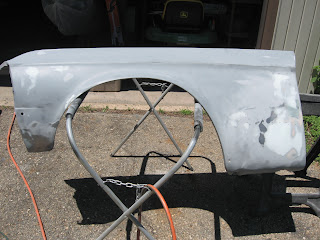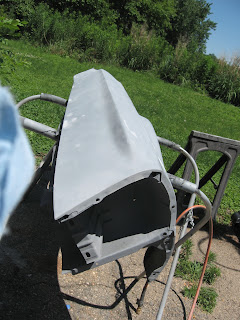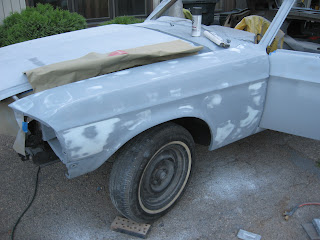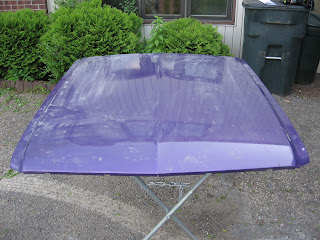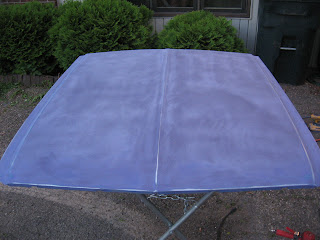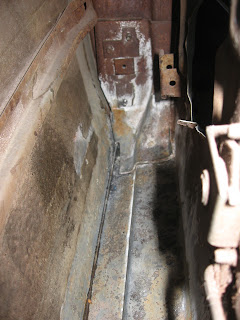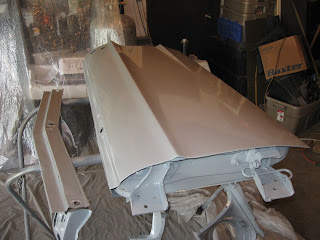It's Christmas Day, and since we're in Michigan alone there's nothing to do and I'm quite bored. So I'm going to blog. There are a few areas left that I need to catch up on. I actually started this entry back on Sept 26 and am just now getting around to posting it. This will be a boring entry because I never had my camera with me when I was blocking the car. Probably because it wasn't much to look at, and it's what I spent the entire summer doing.
The purpose of this entry is to discuss what happens after the initial two coats of epoxy are laid down. Because I'd rather fill over epoxy than the 2k high build primer, I guide coated the epoxy and blocked it to reveal the low spots. Many of them I bumped out, some I filled to perfection. At this point I wised up and skim coated large panel areas to give me something to work with and create a flatter surface.
After the filler work on the epoxy was completed, I shot 1-2 coats of epoxy again, and then it was time to spray SPI 2k primer, aka high build primer. This goes on 3 coats at a time, flashing for 5 minutes between each coat. By the way, what I describe in this very post is what I did the entire summer. After the final coat was flashed and dried, I blocked the panel, once again bumping out what low spots I could or filling them, this time using polyester Marston Platinum filler; equivalent in all aspects to Rage Xtreme, but at a fraction of the cost. Polyester filler can go over almost any top coat (which is why I selected it), but it's also much creamier than your normal talc-based fillers, not to mention it sands much better, making it ideal for skimming entire panels where a very fine, light, easy sanding coat is desired to remove any last waves. Before shooting anymore 2k, I used the opportunity to guide coat the new area and block it down. If there were low spots I'd gently bump it from the back or spot-apply more filler. Finally, at the edges and where deep sanding scratches are present, I skim with polyester putty, or Evercoat EZ Sand, to be exact. The polyester and EZ sand are both being sanded with 180-220. When I feel it's perfect I'm ready to shoot another 3 coats of 2k and block again. Hopefully after blocking I get a flat surface.
Before closing up shop in the face of the move, one of the last things I did was put [hopefully] the final three coats of 2k down on the roof and trunk. I left it unsanded since those panels will be setting as-is for half a year or more.
